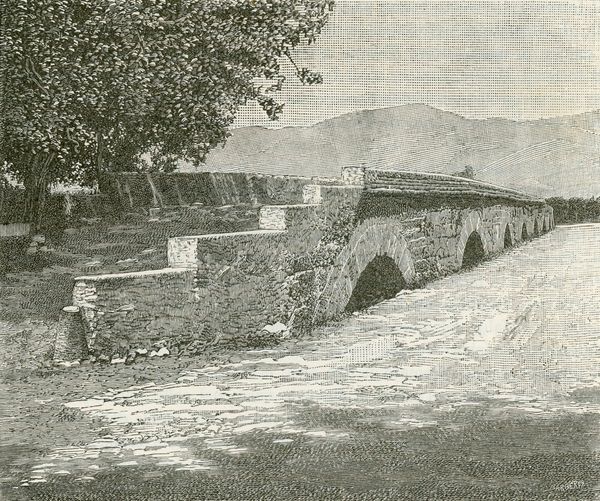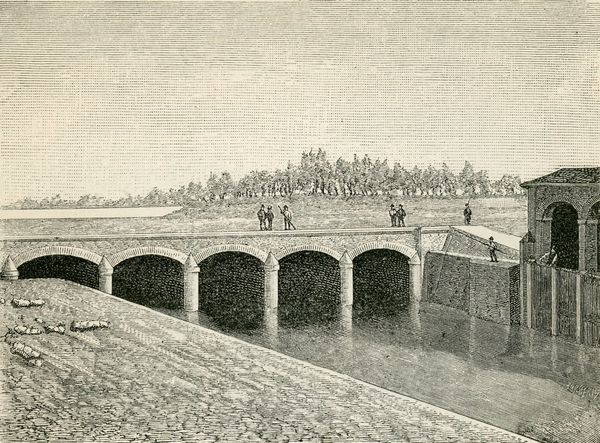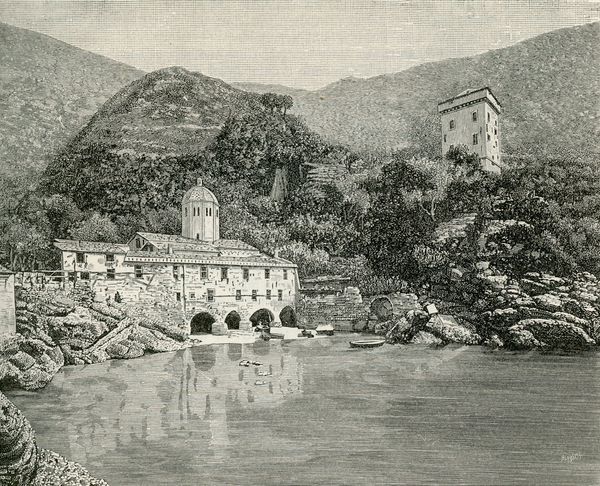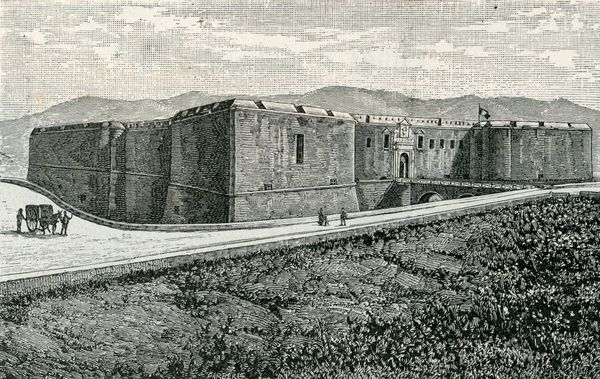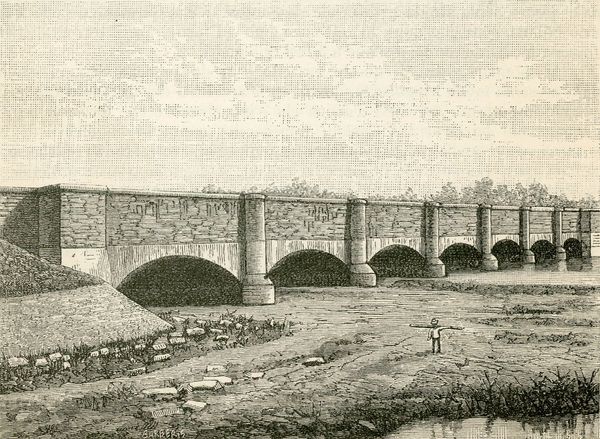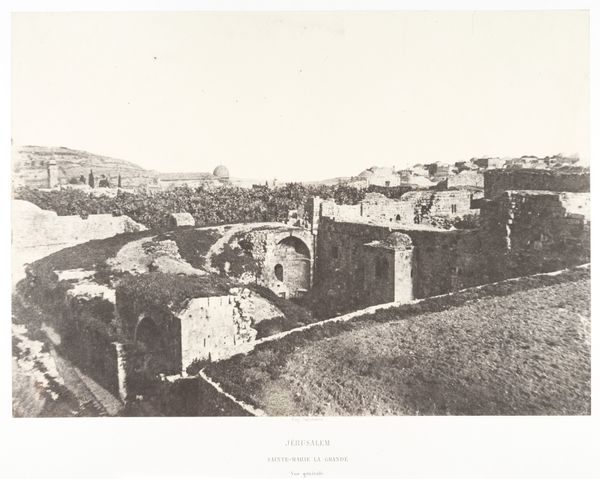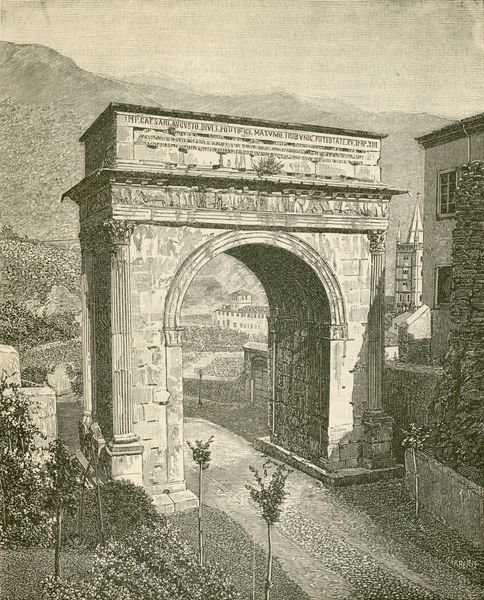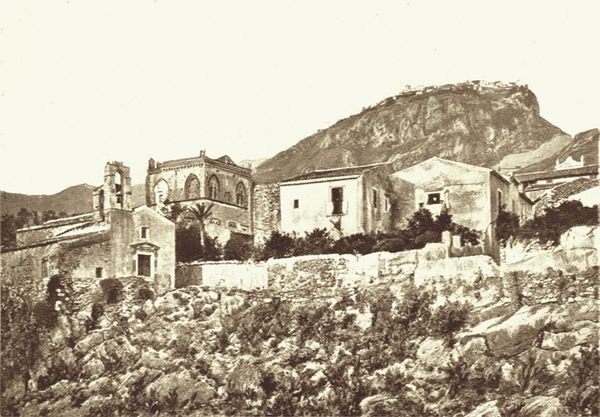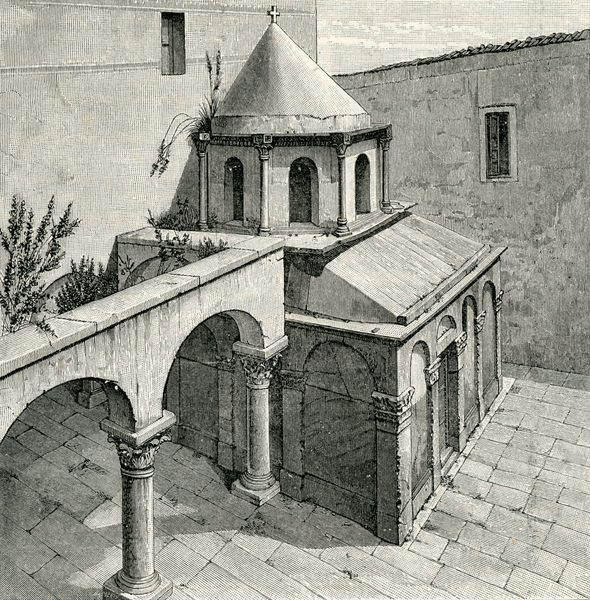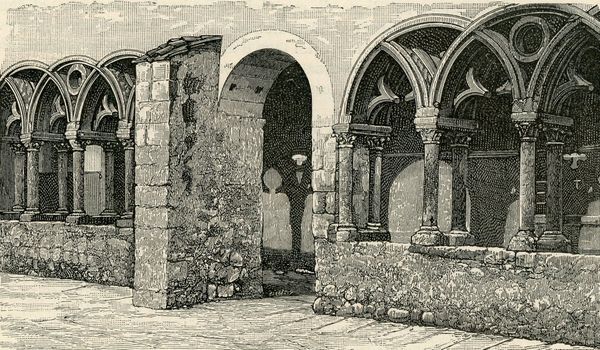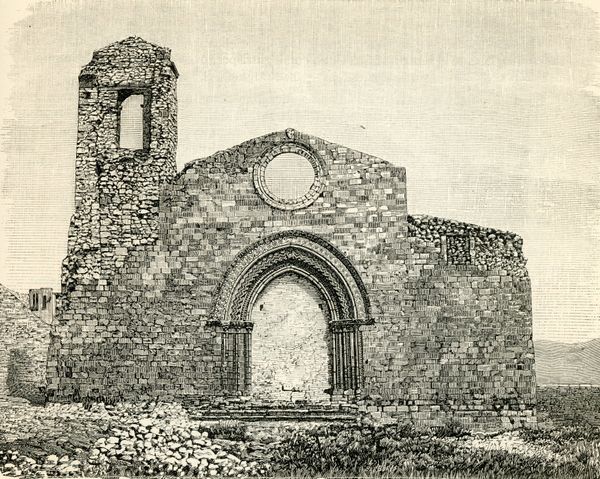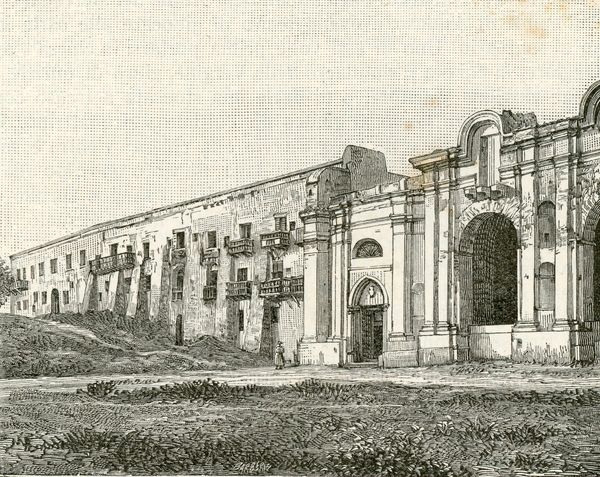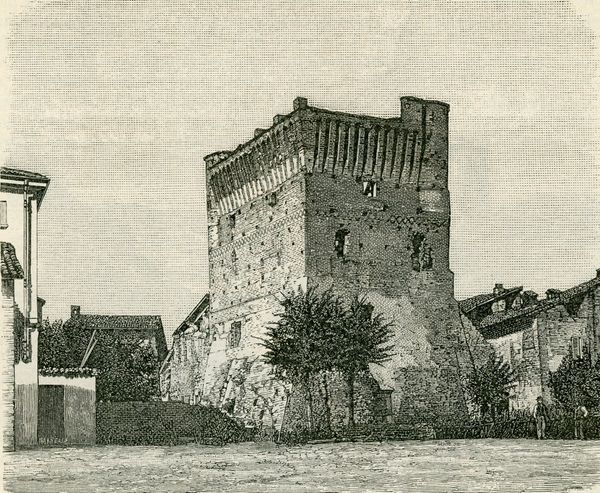
drawing, print, ink
#
drawing
# print
#
landscape
#
ink
#
cityscape
#
realism
Copyright: Public domain
Editor: So, this is Giuseppe Barberis' "Antico Ponte in Pietra Sulla Trebbia," a landscape done with ink, likely around 1890. It’s striking how detailed it is for an ink drawing – almost photographic. There's a strong sense of enduring history, yet a little melancholic too, because it is presented like a relic of something vanishing. What do you see in this piece? Curator: Indeed, it evokes that sense of time’s passage. Notice how the artist painstakingly renders the stone bridge, contrasting its solid permanence with the flowing water beneath. The bridge itself is a potent symbol – connecting not just physical locations but also past and present. Consider its construction – the arch is an ancient Roman form, loaded with imperial ambition and lasting power. Editor: So, the bridge isn't just a bridge. The shape of its arches is a Roman symbol? Curator: Exactly! The arch is not merely structural but carries the weight of cultural memory. Look at the towers flanking the largest arch, they recall sacred spaces. Then look at the wear and tear which speak to something else – to lives lived, stories unfolding, and civilizations rising and falling, each leaving their mark. And that omnipresent water. Editor: The Trebbia river also functions symbolically? Water usually stands for the passage of time and a transition from the old to the new. Curator: Precisely. Water is the constant flux against the solidity of stone, hinting that nothing truly endures in the physical realm, even that "antico ponte", other than the emotional bonds that images instill. Even if a bit sad! Editor: Very insightful, thanks! It is thought-provoking to look at everyday monuments this way. Curator: My pleasure! These monuments are our connection with cultural memory, as each brick carries the imprint of the past, ready to resonate with us anew.
Comments
No comments
Be the first to comment and join the conversation on the ultimate creative platform.
